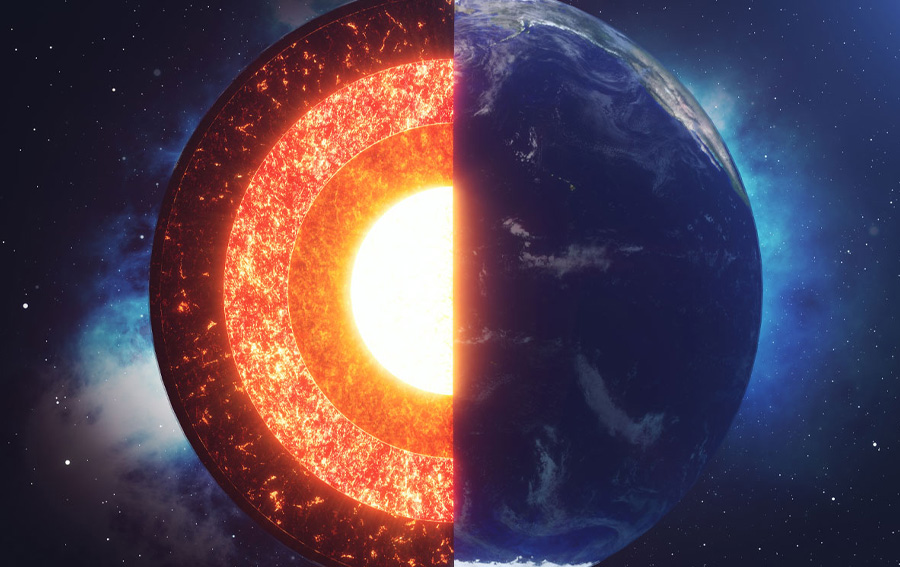
What will happen is that the rock will popcorn and then must be removed.
In the meantime, this is the device used for producing so called crop circles in England since 1980. Military secrecy has obviously been released.
Otherwise our technology can go down to 20,000 feet in sediments which is dicey when you get there. using this on non sediments will possibly produce a far better solution for tapping hot rocks. Then blasting a huge fracture zone and running a recovery well allows for the creation of huge thermal reservoir hot enough to produce high quality steam.
All good. And yes it may be just that easy provided we do tap almost molten rock formations to create a blast zone. This is easiest by volcanoes but deep enough anywhere.
This is a great solution for unlimited grid energy. Note that the spent steam water is pumped back down.
Could Energy Be Beneath Our Feet?
Deep Holes on Earth Set to Tap Ancient Geothermal Sources
Posted on July 16, 2022 by AReditorialDept
https://atlantisrising.com/2022/07/16/could-the-energy-we-need-be-beneath-our-feet/?
https://news.mit.edu/2022/quaise-energy-geothermal-0628
There’s an abandoned coal power plant in upstate New York that most people regard as a useless relic. But MIT’s Paul Woskov sees things differently.
There’s an abandoned coal power plant in upstate New York that most people regard as a useless relic. But MIT’s Paul Woskov sees things differently.
Woskov, a research engineer in MIT’s Plasma Science and Fusion Center, notes the plant’s power turbine is still intact and the transmission lines still run to the grid. Using an approach he’s been working on for the last 14 years, he’s hoping it will be back online, completely carbon-free, within the decade.
In fact, Quaise Energy, the company commercializing Woskov’s work, believes if it can retrofit one power plant, the same process will work on virtually every coal and gas power plant in the world.
Quaise is hoping to accomplish those lofty goals by tapping into the energy source below our feet. The company plans to vaporize enough rock to create the world’s deepest holes and harvest geothermal energy at a scale that could satisfy human energy consumption for millions of years. They haven’t yet solved all the related engineering challenges, but Quaise’s founders have set an ambitious timeline to begin harvesting energy from a pilot well by 2026.
The plan would be easier to dismiss as unrealistic if it were based on a new and unproven technology. But Quaise’s drilling systems center around a microwave-emitting device called a gyrotron that has been used in research and manufacturing for decades.
“This will happen quickly once we solve the immediate engineering problems of transmitting a clean beam and having it operate at a high energy density without breakdown,” explains Woskov, who is not formally affiliated with Quaise but serves as an advisor. “It’ll go fast because the underlying technology, gyrotrons, are commercially available. You could place an order with a company and have a system delivered right now — granted, these beam sources have never been used 24/7, but they are engineered to be operational for long time periods. In five or six years, I think we’ll have a plant running if we solve these engineering problems. I’m very optimistic.”
Woskov and many other researchers have been using gyrotrons to heat material in nuclear fusion experiments for decades. It wasn’t until 2008, however, after the MIT Energy Initiative (MITEI) published a request for proposals on new geothermal drilling technologies, that Woskov thought of using gyrotrons for a new application.
“[Gyrotrons] haven’t been well-publicized in the general science community, but those of us in fusion research understood they were very powerful beam sources — like lasers, but in a different frequency range,” Woskov says. “I thought, why not direct these high-power beams, instead of into fusion plasma, down into rock and vaporize the hole?”
As power from other renewable energy sources has exploded in recent decades, geothermal energy has plateaued, mainly because geothermal plants only exist in places where natural conditions allow for energy extraction at relatively shallow depths of up to 400 feet beneath the Earth’s surface. At a certain point, conventional drilling becomes impractical because deeper crust is both hotter and harder, which wears down mechanical drill bits.
Woskov’s idea to use gyrotron beams to vaporize rock sent him on a research journey that has never really stopped. With some funding from MITEI, he began running tests, quickly filling his office with small rock formations he’d blasted with millimeter waves from a small gyrotron in MIT’s Plasma Science and Fusion Center.
Graphics and captions
No comments:
Post a Comment